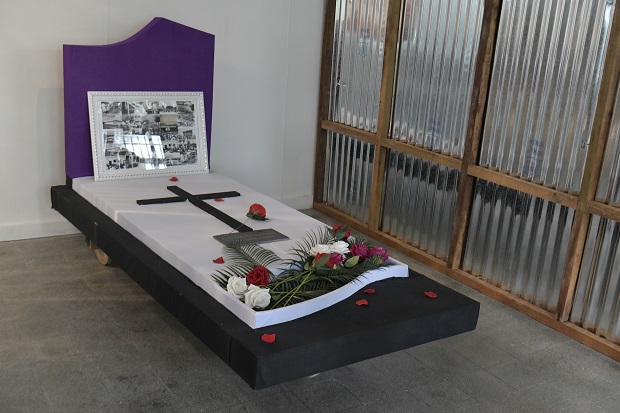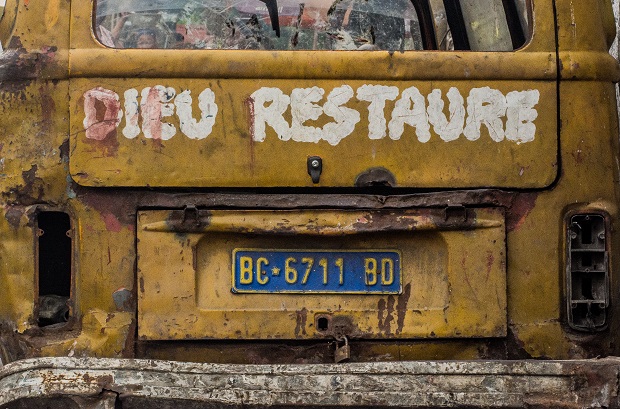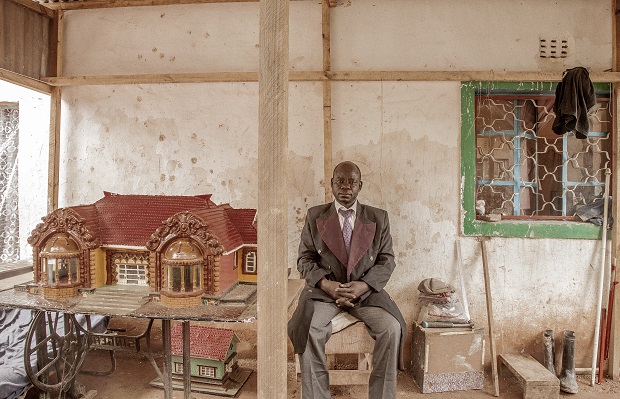- Daily & Weekly newsletters
- Buy & download The Bulletin
- Comment on our articles
Building a bridge between Kinshasa and Brussels: Exhibition showcases urban development in DRC capital
Some dozen artists from the Congolese capital present multidisciplinary works in the new free exhibition Kinshasa (N)tonga: Between Future and Dust, organised by KANAL-Centre Pompidou.
The show focuses on Kinshasa’s multi-layered urban expansion into a metropolis of 17 million inhabitants, making it Africa’s third largest capital.

The arrival of Belgian colonisers in 1881 paved the way for wide avenues, railroads, administrative areas and parks, creating segregated areas. Archive photos trace the roots of Kinshasa from the late 19th century to the 1970s. Modernist utopias and the city’s colonial past are documented in Magloire Mpaka Banona's work, while Prisca Tankwey's performance Leopoldville Mourning (pictured above) questions this past, along with Sammy Baloji and Filip de Boeck's film The Tower: A Concrete Utopia.
In dialogue with these works are archives from Italian architect Eugene Palumbo and his Congolese associate Fernand Tala N’Gai. The pair worked under President Mobutu Sese Seko during an urban return to ‘authenticity’ in the 1970s.

With the city’s subsequent organic growth largely unregulated, building work has since become idiosyncratic. The word (N)tóngá in the exhibition title means both ‘needle’ and ‘construction site’ in local language Lingala.
Artists also highlight the creative processes that enable the population to counteract this imposed vision of the city and its identity, while offering perspectives on its future.
The exhibition, which has already been staged in Kinshasa, is part of Living Traces, a project initiated by KANAL-Centre Pompidou and its partners. The message behind the project is the bridge that they want to create between the two cities, points out Kanal director Yves Goldstein.
![Kongo Astronauts, SCrashed_Capital.exe Untitled [-3], 2021](/sites/default/files/images/users/u8691/kongo_astronauts_scrashed_capital.exe_untitled_-3_2021.jpg)
Co-curator Estelle Lacaille said it was important to show how the artists were also human-beings facing the same challenges as the rest of the population. “The city was first built for 400,000 people so now the people of Kinshasa are facing a lot of problems like electricity cuts, water cuts and infrastructure problems.”
Despite these difficulties, the city functions, she underlines. “People find a way to go where they need to go and do what they need to do. I cannot explain how, except to say that it’s an informal way to live.”

This informality extends to city architecture. “There is a lot of what is called self-building. The film by Baloji (pictured above) and De Boeck is about a doctor who is building himself a 12-storey building, even though he has no professional qualifications as an architect or a builder.”
Due to ongoing renovation work at Kanal in Place Sainctelette, the exhibition is located in the temporary canalside space K1.
Kinshasa (N)tonga: Between Future and Dust
Until 20 November
K1
Avenue du Port 1
Photos: (main image) Gosette Lubondo, Dernière célébration (série Terre de lait, terre de miel) 2022; Prisca Tankwey, Leopoldville Mourning, 2019; Azgard Itambo, CODE KIN, 2018 ©Azgard Itambo; Kongo Astronauts, SCrashed_Capital.exe Untitled, 2021; Sammy Baloji, Artist Richard Kaumba at his home in Lubumbashi, 2013


















